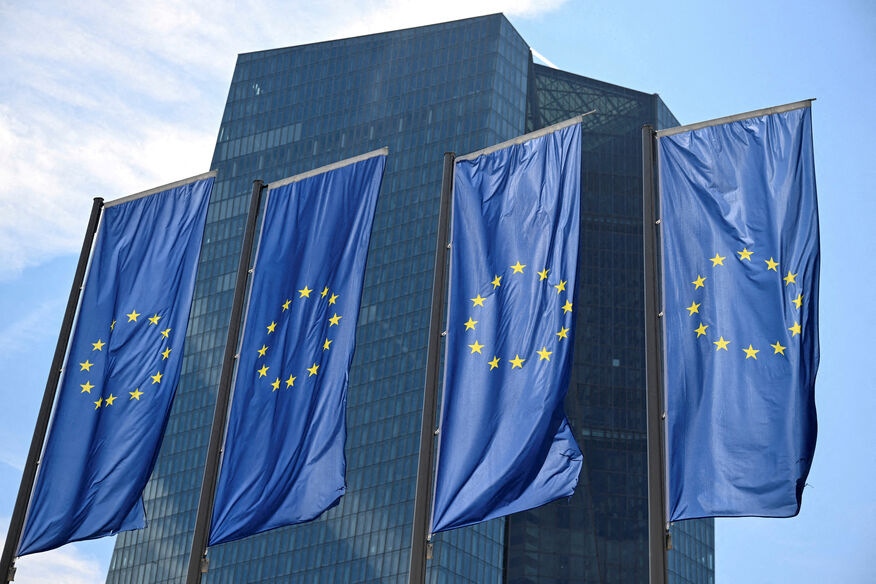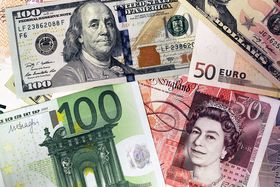[Reuters Breakingviews] US-EU tariffs are a skirmish in riskier trade war

LONDON, March 12 (Reuters Breakingviews) - Brussels and Washington’s latest trade spat has an almost reassuring air of familiarity. Just as former European Commission boss Jean-Claude Juncker reacted to President Donald Trump’s tariffs on European steel imports back in 2018 with targeted counter-measures on signature U.S. goods like Harley-Davidson motorbikes, so Juncker’s successor Ursula von der Leyen on Wednesday responded to the same Trump aggression by reimposing the same levies. Unfortunately, this time around both assault and counter are mere skirmishes in what could become a more damaging confrontation.
The new measures are admittedly tougher than those in Trump’s first administration, which only affected European Union steel and aluminium trade with a 2024 value of 8 billion euros. The broader scope of the president’s levies this time means 26 billion euros of EU exports are impacted, requiring von der Leyen to find another 18 billion euros of hits on U.S. exports, including agricultural produce, as of next month. Even so, the battle so far only affects 5% of what the EU sends across the Atlantic.
Von der Leyen’s task is trickier than Juncker’s, though. In 2018 the EU could target Kentucky bourbon, for example, confident that hitting U.S. Senate majority leader Mitch McConnell’s state would create leverage. That, along with an EU pledge to buy more U.S. products, averted a more serious trade war. In 2025 an arguably more quiescent Congress makes it harder to figure out who or what to target. More importantly, EU-U.S. tensions are about to spill over into dicier areas.
The EU will soon conclude a year-long probe into whether Alphabet GOOGL.O, Apple AAPL.O and Meta Platforms META.O failed to comply with its new Digital Markets Act. If it imposed fines of up to 10% of these Big Tech giants’ revenue, that would rapidly escalate tensions with Washington. Trump might then be much more aggressive with his so-called reciprocal tariffs, due to kick in by April 2. These could target individual EU member states rather than the bloc as a whole, a move that would make it harder for Brussels to respond.
Von der Leyen is aware of this risk, which possibly explains why Brussels may make its Big Tech fines more bearable. But even modest fines could enflame the situation. A Doomsday scenario might see Trump target the likes of Germany for special reciprocal-tariff treatment, putting more pressure on the EU to hit back hard. Von der Leyen’s nuclear option would be to deploy the bloc’s new anti-coercion instrument to target U.S. exports by weakening the intellectual property rights of its large companies. That could trigger even bigger reprisals from Washington.
Brussels is in a fight that’s hard to win. The EU exports more goods and services to the U.S. than vice versa, and this surplus is heavily weighted towards a small group of member states, like Germany. That means Europe may struggle to maintain a unified position in the face of a rapidly escalating trade war. The opening salvo of this battle may look familiar, but its implications are anything but.
Follow @gfhay on X
CONTEXT NEWS
The European Union will impose counter tariffs on 26 billion euros ($28 billion) worth of U.S. goods from next month, the European Commission said on March 12, ramping up a global trade war in response to blanket U.S. tariffs on steel and aluminium.
The EU executive said that it remained open to negotiations and considered higher tariffs in no one’s interest.
U.S. President Donald Trump’s increased tariffs of 25% on all steel and aluminium imports took effect on March 11 as prior exemptions, duty free quotas and product exclusions expired.
The European Commission said it will end its current suspension of tariffs on U.S. products on April 1 and that its levies will be fully in place by April 13. The suspended tariffs apply to products ranging from boats to bourbon to motorbikes, and the EU said it would now start a two-week consultation to pick other product categories.
The new measures will target around 18 billion euros in goods, with the overall objective to ensure that the total value of the EU measures corresponds to the increased value of trade impacted by the new U.S. tariffs, the EU said.
The proposed target products include industrial and agricultural products, such as steel and aluminium, textiles, home appliances, plastics, poultry, beef, eggs, dairy, sugar and vegetables.
Graphic: Germany has the biggest US trade surplus in goods of EU member states








